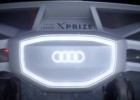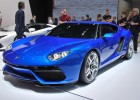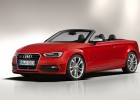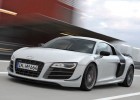Audi, researchers at four U.S. universities begin work on solutions to urban mobility challenges
A new research initiative launched by Audi, its Electronics Research Laboratory in Silicon Valley and four top U.S. universities will develop technologies aimed at easing the congestion, dangers and inconveniences that often confront drivers in the world’s biggest cities.
The new three-year research initiative is called “Audi Urban Intelligent Assist.” The aim is to take connected car, driver assistance and infrastructure electronics to the next level of providing detailed information so motorists have a better sense of the driving conditions surrounding them.
With this initiative, the universities, ERL and Audi want to cover the complete process of navigating in a mega city. The vision is to develop Audi models that will recognize individual motorists behind the wheel, know preferred destinations, routes the motorists have most commonly traveled and the time needed to reach appointments. The car will be able to help the drivers detect and avoid dangerous situations better, too.
The universities involved in the Audi Urban Intelligent Assist initiative are the University of Southern California, University of California at Berkeley, University of California at San Diego and the University of Michigan Transportation Research Institute (UMTRI).
“Technologies that help motorists become more aware and efficient are a crucial step toward solving some of the biggest transportation challenges on the horizon across the world,” said Dr. Burkhard Huhnke, executive director of the Audi Electronics Research Laboratory in Palo Alto, Calif. “Audi is confident that this initiative will provide an important insight on the future of urban transportation and produce innovative concepts that promote efficient, pleasant, and safer mobility.”
The universities that will be involved
The Audi vehicles envisioned in this new project would work with a city’s connected infrastructure to, for example, reserve a parking spot near the driver’s desired destination and optimize the trip according to what is happening throughout the city. The future connected Audi will basically take care of all the little things that make driving in the city tedious and dangerous, so that motorists can enjoy the drive and get to where they want to go efficiently, safely, and comfortably.
“Driving in an urban environment is becoming more challenging due to increasing traffic congestion that affects mobility, safety and driver comfort,” said Professor Petros Ioannou
University of Southern California Center for Advanced Transportation Technologies. “New technologies and ideas can be exploited and developed that would allow the vehicle to interact with the urban environment in a much more efficient way by providing improved mobility, driving comfort and safety.”
“We have always believed in the need for a holistic approach to driver assistance systems, and working with our partners at USC, UC Berkeley and Audi, we are confident that we can pool our expertise for the benefit and safety of urban drivers not just in California, but worldwide,” said Mohan Trivedi, director of UCSD##Q##s Laboratory for Intelligent and Safe Automobiles (LISA). “Safety on urban roads will require a very deep understanding of the driver and his or her environment. With the proliferation of consumer electronics devices in and on-board vehicles, a major challenge in front of us is to ensure that assistance systems really help rather than distract or irritate the driver.”
The Audi Urban Intelligent Assist project is the latest in a series of university collaborations that Audi has formed to explore the frontiers of automotive technologies and electronics. By working closely with the brightest electronics minds in the U.S., Audi and ERL are bringing to life the strategy expressed by AUDI AG Chairman Rupert Stadler in his Jan. 6 CES keynote address.
“Our plan is to integrate the best technologies from the best partners available and adapt these for the automotive world,“ Stadler said. “And we intend to pick up the pace of innovation even further.”
Other Audi initiatives with ERL have explored the advances in autonomous driving, emissions controls and monitoring, and dynamic navigation systems that connect to a motorist’s driving patterns and social circle. University partners in the previous research efforts have included Stanford University, the Massachusetts Institute of Technology and the University of California at Riverside. The work that Audi and ERL are doing with these institutions is aimed at leveraging new technologies that will be available in the automobiles of the next decades.
Why urban mobility research makes sense now
Cities in U.S. and in the world are growing at a rapid pace. In the US, urban population has exploded to about 85% of the country’s total. This translates into expanding but denser cities and megacities. Given the difficulties and high costs of updating the urban infrastructure, these factors pose a real mobility challenge for today and for the future.
Increased road congestion, longer commute times and insufficient infrastructure to house the rapidly expanding vehicular pool, is making driving in megacities an increasingly stressful and dangerous task, which impacts the quality of life of every commuter.
Audi is aware of these future mobility challenges, and of the opportunities that an increasingly connected world brings for the future. In order to advance the development of urban mobility, Audi together with ERL embraced the vision of a future involving connected intelligent vehicles that interact with their environment and with each other, to make urban mobility more efficient, more convenient, less stressful, and safer.
After an open request for proposals to American universities, and a lengthy selection process, Audi signed an agreement with the four research universities – each with expertise to pursue the following topics:
Audi Urban Crash Analysis
UMTRI will conduct a study using extensive accident databases with the aim of finding “accident hot spots” in urban centers.
The idea is to understand what scenarios in urban driving environments pose the higher threats and difficulties for drivers, leading to a higher number of accidents. Understanding the circumstances and scenarios of accidents, it is possible to determine likely causes, and this information will be important for the design of systems to mitigate or eliminate these threats in the connected Audi of the future.
Audi Urban Diagnostic
UC Berkeley PATH will be focused on getting and aggregating historic and real time urban data from multiple sources, to support the overall goal of the Urban Intelligent Assist initiative. This data will include local vehicle and pedestrian information from onboard vehicle sensors for local awareness, as well as aggregated traffic and traffic controlling information (i.e. traffic lights, etc.), parking availability, urban events (sports events, concerts, accidents, etc.) among other, in order to get an up to the minute snapshot of the city, but also to make predictions on what the city environment is going to look like in the near future (15 to 60 minutes from now)
Audi Driver Diagnostics
UC San Diego will focus on understanding the driver and his/her preferences, to tailor the urban driving experience to fit the personal needs of each Audi customer. The major research questions are to determine what aspects of urban mobility distract and stress individual drivers, and what kind of metrics can be used for those, in order to support and assist each user appropriately to make urban commute more enjoyable, efficient, safer, and smarter.
Audi Urban Assistance
USC, in collaboration with UC San Diego, and UC Berkeley PATH, will deal with finding the correct way to bring relevant urban information to the driver, minimizing distraction, information over load, and stress. The research focus is on determining critical information in urban situations, such as vehicle and pedestrian detection for intersection safety, available parking spaces near a destination, or the governing traffic rules at the time of arrival (no parking, car pool lanes, no left turn, etc.). The systems would then find the correct medium to convey this information to the driver.
Audi Urban Navigation
USC will use urban information collected from multiple on and off board sources to predict how the city flows through the day, and use this in combination to the driver diagnostic information to generate the most comfortable and efficient route for each driver, and to give recommendations about route planning and execution tailor made to each user to make each trip a smart stress-free one.
SOURCE: Audi USA News




















